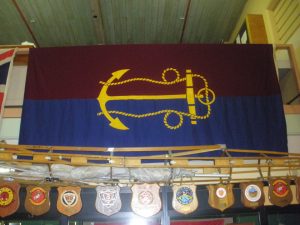- Author
- A.N. Other
- Subjects
- History - general
- Tags
-
- RAN Ships
- None noted.
- Publication
- March 2012 edition of the Naval Historical Review (all rights reserved)
This eventually led to a Royal Commission to investigate the administration of the Navy and Defence Departments which completed its report in 1918. The Commissioners damming findings summaries the ills afflicting the Naval Board as:
- The Naval Board failing to fulfil the role of controlling body of the Navy Department due largely to the actions, or lack of actions, of the Minister in charge.
- The long-running conflict between Creswell and Clarkson had further prejudiced the chances of successful operation of the Board by establishing factions.
- The Government failing to appoint a Finance Member, despite having been implored to do so on several occasions, which led to wastage of public funds.
The Commission’s findings resulted in further reconstruction of the Board and a reallocation of its duties with a new comprehensive set of procedures and rules for the administration of the Navy Department issued in 1920. A copy of the 1920 Official Procedures and Rules has a preamble which in part reads: The Naval Board direct that all persons serving at Navy Office make themselves acquainted with the instructions contained in this book and that the most strict obedience be paid thereto by all concerned. This slim 100 page volume covers most aspects of administration from the constitution of the Board and its functions, noting that at this time the President was the Minister for the Navy, through to such detail as procedures for official correspondence and instructions to the Inspector of Coal. In 1922 the position of Minister of the Navy was terminated with the duties once more absorbed by the Minister for Defence. A separate Ministry for Navy was not again re-established until 1939. Four Navy Ministers were to become Prime Ministers, possibly the most famous being Billy Hughes, who was Navy Minister from 1940 to 1941. The last incumbent was Lance Barnard who relinquished office in 1973.

Despite problems with the earlier Naval Board it did comprise men of great individual ability and intellect. In addition to Rear Admiral Creswell there were two other quite remarkable men firstly Engineer-Captain William Clarkson who for his outstanding organisational skills in mobilising Australian naval forces was promoted to Rear Admiral in 1916. He was knighted in 1918 and upon retirement from the RAN in 1922 was promoted to Engineer Vice Admiral, he was then to hold a number of other senior government positions. Secondly the able Staff Paymaster Manisty was to hold a number of senior Royal Naval appointments and was promoted Paymaster Rear Admiral in 1929 and upon retirement in 1932 he received a knighthood. He returned to service heading the Convoy Section of the Ministry of War Transport during WW11.
Since April 1911 the Commonwealth Navy Office was separated from the remainder of Defence and moved from Victoria Barracks on 11 April to new offices at Lonsdale House, 460 Lonsdale Street in Melbourne, opposite the law courts. The building no longer exists as this site is now partly covered by law courts and commercial development. The Victorian Chapter of the Naval Historical Society is moving to have a brass plate set in the pavement to mark the location of the Board’s offices. In 1923 Navy Offices and those of the Naval Board returned to Victoria Barracks where they remained until a final relocation to Canberra in 1959. With the 1972 Defence reorganisation a separate naval ministry was abolished and as the need for the Board diminished and it too was abolished in 1975.
This leads to an interesting little conundrum regarding the Australian Naval Board’s Flag. As keen observers of the Admiralty Manual of Seamanship Volume 1 know there is a section on flags which includes that of the Lord High Admiral, also known as the Admiralty Flag. The flag has a red background; to be exact the colour was changed to crimson in 1929, displaying a yellow anchor, again there has been a later change to the colour gold. This flag is used by the Lord High Admiral or Commissioners for executing the office of Lord High Admiral and is to be flown day and night. In 1964 the position of Lord High Admiral became redundant other than when used by the Sovereign with the Admiralty flag continuing in use only on the Royal yacht HMS Britannia as long as she remained in commission.




